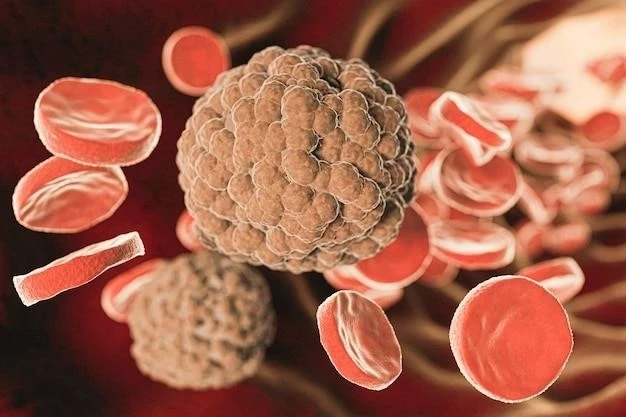Background n Aims⁚ Intestinal neurofibromatosis is an alternate form of neurofibromatosis presenting with neurofibromas limited to the intestine. The molecular basis of intestinal neurofibromatosis is currently elusive. The inherited PDGFRA mutation in familial cases indicates a link to familial GIST. The unique phenotype and inheritance pattern distinguish it from other variants of neurofibromatosis.
Intestinal neurofibromatosis is a distinct form of neurofibromatosis characterized by neurofibromas limited to the intestine, without typical features of NF1 and NF2. The molecular basis of this condition is not fully understood٫ presenting allelic association with familial GIST. This disorder exhibits an autosomal dominant inheritance pattern٫ with unique phenotypic expressions.
Types and Characteristics of Neurofibromatosis
The classification of neurofibromatosis includes distinct types such as NF1 and NF2, each with unique clinical presentations and genetic implications.
Definition and Background
Intestinal neurofibromatosis is a distinctive form of the condition, characterized by neurofibromas limited to the intestine, devoid of typical NF1 and NF2 features; The precise molecular basis of this variation remains unclear, linked to familial GIST through PDGFRA mutations, showing an autosomal dominant pattern.
Neurofibromatosis Type 2 (NF2)
Neurofibromatosis type 2 (NF2) is characterized by the development of tumors affecting the nervous system٫ particularly the cranial and spinal nerves. This type presents distinct clinical features and genetic profiles compared to NF1٫ showcasing its unique nature within the spectrum of neurofibromatosis disorders.
Familial Intestinal Neurofibromatosis⁚ Unique Features
Intestinal neurofibromatosis, known as NF3b, stands out for its distinctive presentation with neurofibromas localized solely in the intestines. This form exhibits an adult onset, variable expression, and an autosomal dominant inheritance pattern.
Distinctive Characteristics
Unique attributes of familial intestinal neurofibromatosis include localized intestinal neurofibromas, an adult-onset pattern, and an autosomal dominant inheritance. Compared to NF1 and NF2٫ these features set it apart within the neurofibromatosis spectrum.
Inheritance Pattern
Familial intestinal neurofibromatosis follows an autosomal dominant inheritance pattern. This means that an affected individual has a 50% chance of passing the condition on to each of their children. The inheritance of this unique form of neurofibromatosis is distinct from other types, contributing to its specialized characteristics.
Molecular Basis of Intestinal Neurofibromatosis
The molecular basis of intestinal neurofibromatosis is currently elusive, with potential allelic association to familial GIST through PDGFRA mutations.
Genetic Mutations Associated
The presence of PDGFRA mutations in familial intestinal neurofibromatosis suggests an allelic association with familial GIST, indicating a potential link between these conditions at the genetic level.
Relationship to Gastrointestinal Stromal Tumors (GISTs)
The presence of PDGFRA mutations in familial intestinal neurofibromatosis indicates a potential allelic association with familial GIST, suggesting a close genetic relationship between these conditions at the molecular level.
Clinical Presentation and Symptoms
Asymptomatic in early stages
Gastrointestinal manifestations⁚ Intestinal obstruction, vomiting, altered bowel habits.
Asymptomatic in Early Stages
Patients with familial intestinal neurofibromatosis may be asymptomatic during the initial phases of the condition. Symptoms usually manifest as gastrointestinal issues such as intestinal obstruction, vomiting, and altered bowel habits as the disorder progresses.
Familial intestinal neurofibromatosis can lead to various gastrointestinal symptoms, such as abdominal pain, bleeding, and manifestations related to tumor masses, including obstruction, jaundice, and other signs as the disease progresses. Specific neurofibroma involvement in the small bowel, retroperitoneum, and colon may also occur.
Diagnosis and Differential Diagnosis
Diagnostic approaches
Distinguishing familial intestinal neurofibromatosis from other conditions⁚ Clinical manifestations, genetic testing, imaging studies.
Gastrointestinal Manifestations
In familial intestinal neurofibromatosis, patients may experience symptoms such as abdominal pain, bleeding, and issues related to tumor growth, including obstruction and jaundice as the disease progresses. Specific neurofibromas in the small bowel, retroperitoneum, and colon may also occur.
Distinguishing Familial Intestinal Neurofibromatosis from Other Conditions
Clinical manifestations, genetic testing, and imaging studies play vital roles in distinguishing familial intestinal neurofibromatosis from other conditions. By evaluating specific symptomatology and genetic markers, healthcare professionals can accurately diagnose this unique form of neurofibromatosis.
Surgical interventions
Pharmacological therapies⁚ Medications to manage symptoms and complications;

Treatment Options for Familial Intestinal Neurofibromatosis
Surgical interventions play a crucial role in managing familial intestinal neurofibromatosis, especially in addressing complications such as intestinal obstruction. Pharmacological therapies are also utilized to manage symptoms effectively and improve the patient’s quality of life.
Pharmacological Therapies
Pharmacological therapies are utilized in managing familial intestinal neurofibromatosis to alleviate symptoms and enhance the patient’s quality of life. Medications play a crucial role in addressing complications and supporting overall well-being.
Prognosis and Complications
Long-term outlook⁚ Variable course of familial intestinal neurofibromatosis, with complications such as intestinal obstruction and gastrointestinal symptoms.
Long-Term Outlook
The long-term prognosis for familial intestinal neurofibromatosis can vary, and complications such as intestinal obstruction and gastrointestinal symptoms may impact the quality of life of affected individuals over time.
Potential Complications
Complications associated with familial intestinal neurofibromatosis include intestinal obstruction, bleeding, and symptoms related to tumor masses such as jaundice and obstruction. Monitoring and managing these complications are essential for improving patient outcomes.

Research and Developments in Familial Intestinal Neurofibromatosis
Recent studies have highlighted the molecular genetics and potential links between familial intestinal neurofibromatosis and other conditions like familial gastrointestinal stromal tumors. Emerging treatments focus on understanding the genetic aspects for improved management.
Recent Studies and Findings
Recent studies have shed light on the molecular genetics and potential associations of familial intestinal neurofibromatosis with conditions like familial gastrointestinal stromal tumors. Understanding these findings can pave the way for innovative treatments and tailored management strategies.
Emerging Treatments and Therapies
Emerging treatments for familial intestinal neurofibromatosis focus on understanding the genetic underpinnings and potential associations with conditions like familial gastrointestinal stromal tumors. By exploring the molecular aspects, new therapeutic approaches tailored to this unique form of neurofibromatosis are being developed to enhance patient care.
Impact on Families and Genetic Counseling
Genetic testing and counseling services
Support networks for affected families⁚ Empowering individuals and families through education and resources.
Genetic Testing and Counseling Services
Genetic testing and counseling services are essential for families affected by familial intestinal neurofibromatosis. By understanding the genetic components and inheritance pattern, individuals can make informed decisions regarding their health and receive appropriate support and guidance.
Support Networks for Affected Families
Support networks are crucial for families impacted by familial intestinal neurofibromatosis. These networks provide emotional support, education, and resources to help individuals and families navigate the challenges associated with the condition. Sharing experiences and building connections within these networks can offer valuable support and guidance.
Awareness and Advocacy for Neurofibromatosis
Promoting understanding and recognition of familial intestinal neurofibromatosis are key in advocacy efforts. Building awareness increases support for affected individuals and advances research initiatives.
Promoting Understanding and Recognition
The provided information outlines the molecular genetics and relationship of familial intestinal neurofibromatosis with conditions like familial gastrointestinal stromal tumors. By focusing on emerging treatments tailored to the genetic aspects of this disorder, improved patient care and management can be achieved.
Advocacy Efforts and Campaigns
Advocacy efforts and campaigns play a crucial role in raising awareness about familial intestinal neurofibromatosis. By advocating for research funding, policy changes, and increased public understanding, these initiatives aim to improve support for affected individuals and foster advancements in medical care and treatment options.
Conclusion
As advancements continue in understanding the genetic underpinnings and unique features of familial intestinal neurofibromatosis, it is crucial to raise awareness, provide support networks, and advocate for improved care. By promoting recognition and enhancing research efforts, we can make significant strides in managing this condition and enhancing the quality of life for affected individuals and their families.
